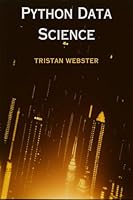
The Signal and the Noise: Why Most Predictions Fail but Some Don’t
- Length: 544 pages
- Edition: 1
- Language: English
- Publisher: Penguin Press HC
- Publication Date: 2012-09-27
- ISBN-10: 159420411X
- ISBN-13: 9781594204111
- Sales Rank: #29159 (See Top 100 Books)
“Nate Silver’s The Signal and the Noise is The Soul of a New Machine for the 21st century.”
—Rachel Maddow, author of Drift
Nate Silver built an innovative system for predicting baseball performance, predicted the 2008 election within a hair’s breadth, and became a national sensation as a blogger—all by the time he was thirty. The New York Times now publishes FiveThirtyEight.com, where Silver is one of the nation’s most influential political forecasters.
Drawing on his own groundbreaking work, Silver examines the world of prediction, investigating how we can distinguish a true signal from a universe of noisy data. Most predictions fail, often at great cost to society, because most of us have a poor understanding of probability and uncertainty. Both experts and laypeople mistake more confident predictions for more accurate ones. But overconfidence is often the reason for failure. If our appreciation of uncertainty improves, our predictions can get better too. This is the “prediction paradox”: The more humility we have about our ability to make predictions, the more successful we can be in planning for the future.
In keeping with his own aim to seek truth from data, Silver visits the most successful forecasters in a range of areas, from hurricanes to baseball, from the poker table to the stock market, from Capitol Hill to the NBA. He explains and evaluates how these forecasters think and what bonds they share. What lies behind their success? Are they good—or just lucky? What patterns have they unraveled? And are their forecasts really right? He explores unanticipated commonalities and exposes unexpected juxtapositions. And sometimes, it is not so much how good a prediction is in an absolute sense that matters but how good it is relative to the competition. In other cases, prediction is still a very rudimentary—and dangerous—science.
Silver observes that the most accurate forecasters tend to have a superior command of probability, and they tend to be both humble and hardworking. They distinguish the predictable from the unpredictable, and they notice a thousand little details that lead them closer to the truth. Because of their appreciation of probability, they can distinguish the signal from the noise.
With everything from the health of the global economy to our ability to fight terrorism dependent on the quality of our predictions, Nate Silver’s insights are an essential read.
Amazon Best Books of the Month, September 2012: People love statistics. Statistics, however, do not always love them back. The Signal and the Noise, Nate Silver’s brilliant and elegant tour of the modern science-slash-art of forecasting, shows what happens when Big Data meets human nature. Baseball, weather forecasting, earthquake prediction, economics, and polling: In all of these areas, Silver finds predictions gone bad thanks to biases, vested interests, and overconfidence. But he also shows where sophisticated forecasters have gotten it right (and occasionally been ignored to boot). In today’s metrics-saturated world, Silver’s book is a timely and readable reminder that statistics are only as good as the people who wield them. —Darryl Campbell
Table of Contents
Chapter 1. A CATASTROPHIC FAILURE OF PREDICTION
Chapter 2. ARE YOU SMARTER THAN A TELEVISION PUNDIT?
Chapter 3. ALL I CARE ABOUT IS W’S AND L’S
Chapter 4. FOR YEARS YOU’VE BEEN TELLING US THAT RAIN IS GREEN
Chapter 5. DESPERATELY SEEKING SIGNAL
Chapter 6. HOW TO DROWN IN THREE FEET OF WATER
Chapter 7. ROLE MODELS
Chapter 8. LESS AND LESS AND LESS WRONG
Chapter 9. RAGE AGAINST THE MACHINES
Chapter 10. THE POKER BUBBLE
Chapter 11. IF YOU CAN’T BEAT ’EM . . .
Chapter 12. A CLIMATE OF HEALTHY SKEPTICISM
Chapter 13. WHAT YOU DON’T KNOW CAN HURT YOU







